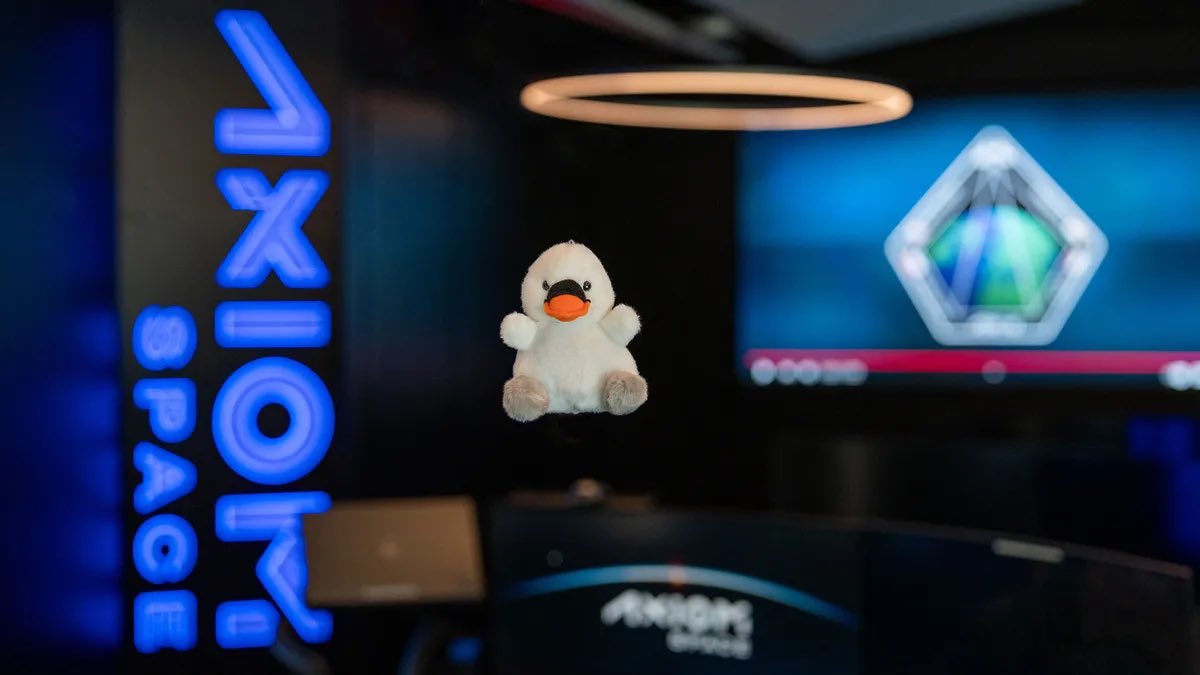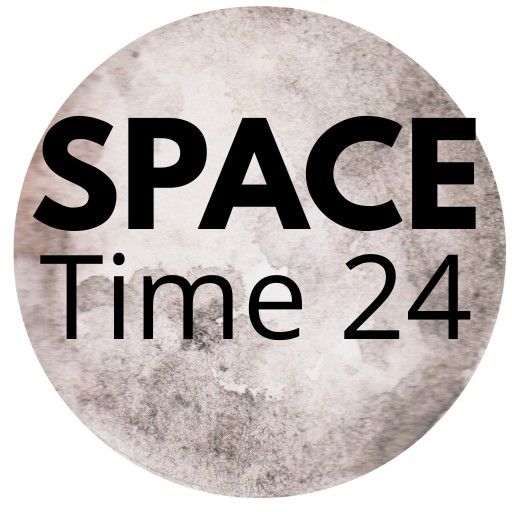Discover why Axiom Mission 4 is making headlines worldwide. Learn how this commercial space mission is uniting nations, advancing science, and redefining human spaceflight in the low Earth orbit era.

Axiom Mission 4: Redefining Spaceflight with Global Collaboration and Private Innovation
The Axiom Mission 4 (Ax-4) mission is capturing global headlines—and for good reason. Scheduled for launch on June 19, 2025, from NASA’s Kennedy Space Center, this mission represents a groundbreaking moment in the evolution of human space exploration. It is not just another visit to the International Space Station (ISS); it is a clear signal of the new space age—driven by international cooperation, scientific advancement, and commercial enterprise.
1. Axiom Mission 4 : Truly International Crew
One of the most defining features of Ax-4 is its diverse and multinational crew, which includes astronauts from India, Poland, and Hungary—countries participating in such a commercial ISS mission for the first time.
Group Captain Shubhanshu Shukla from India is making history as the first Indian to fly to the ISS and the second Indian in space, after Rakesh Sharma’s 1984 mission.
Sławosz Uznański, representing Poland and the European Space Agency (ESA), brings strong scientific credentials as a physicist and engineer.
Tibor Kapu, flying on behalf of Hungary and ESA, adds further depth with expertise in microgravity-based life science experiments.
Peggy Whitson, a veteran American astronaut with a record-setting career at NASA, returns as commander of the Ax-4 mission for Axiom Space.
This crew represents more than national achievement—it symbolizes a broader move toward inclusive and cooperative human presence in space.
2. Commercial Spaceflight in Action
Axiom Mission 4 is a fully privately organized spaceflight led by Axiom Space, with hardware and launch services provided by SpaceX. The mission uses:
The Crew Dragon spacecraft (capsule C213), which will carry the astronauts to and from the ISS.
A Falcon 9 Block 5 rocket for launch, SpaceX’s workhorse rocket system.
This partnership shows how commercial companies are becoming essential to space operations once dominated solely by government agencies like NASA and Roscosmos.
3. Cutting-Edge Research in Microgravity
During their stay on the ISS, the Ax-4 crew will carry out a range of scientific experiments—many of them sponsored by ISRO (India) and ESA. These include:
Human health and biology studies: examining muscle atrophy, immune response, and bone loss in microgravity.
Agricultural experiments: observing plant and crop growth in space.
Technological tests: assessing the durability of materials and sensors in space environments.
Climate and space medicine research, including analysis of cyanobacteria and biomedical samples.
The scientific outcomes are expected to contribute to Earth-based applications in medicine, agriculture, and environmental research.
4. A Mission of Symbolism and Peace
Adding a cultural and emotional layer to the mission, Indian astronaut Shubhanshu Shukla is carrying a symbolic soft toy—a white swan named “Joy”, which represents:
Peace and harmony
Mythological and spiritual significance in Indian culture
Inspiration for future generations
This gesture underscores the mission’s broader message—that space exploration is not just about technology, but also about values, identity, and international goodwill.
5. Overcoming Delays and Technical Hurdles
Axiom-4 was originally slated for earlier in 2025, but the mission faced several technical delays, including:
A liquid oxygen leak discovered during Falcon 9 preparations.
Air pressure issues aboard the ISS’s Russian Zvezda module.
NASA and its partners postponed the launch until all safety systems were verified and stable. These delays highlight the complex coordination required for human spaceflight and the priority given to astronaut safety.
6. A Milestone for the Future of Human Spaceflight
Ax-4 isn’t just a one-off mission—it represents a larger vision for the future:
NASA’s transition from ISS operation to buying services from commercial providers like Axiom Space.
Testing procedures and training astronauts for future deep-space missions, including to the Moon and Mars.
Strengthening global space diplomacy through cooperation across continents and cultures.
As more countries and private players enter the space domain, missions like Ax-4 serve as a blueprint for the future of human spaceflight in low Earth orbit and beyond.
Conclusion
Axiom Mission 4 is more than a technical milestone; it is a symbol of progress, diversity, and cooperation in a rapidly evolving space age. By combining the strengths of multiple nations and private enterprise, this mission showcases the possibilities of a truly global space future. As the launch date nears, the world watches—not just to see a rocket rise into the sky, but to witness a new chapter in humanity’s journey beyond Earth.
Would you like:
https://www.axiomspace.com/mission-blog/ax4-zerog-joy
https://x.com/ISROSpaceflight/status/Axiom Mission 4 Joy
Frequently Asked Questions (FAQs) about Axiom Mission 4
1. What is Axiom Mission 4 (Ax-4)?
Axiom Mission 4 is a fully commercial human spaceflight mission to the International Space Station (ISS), organized by Axiom Space and launched aboard SpaceX’s Crew Dragon spacecraft. It marks the fourth mission in Axiom’s private astronaut program.
2. Why is Ax-4 considered a historic mission?
Ax-4 is historic because it includes astronauts from India, Poland, and Hungary flying to the ISS for the first time on a commercial mission. It also demonstrates the growing role of commercial companies in space travel and international collaboration in human spaceflight.
3. Who are the astronauts on Axiom-4?
The Ax-4 crew includes:
- Peggy Whitson (USA) – Commander, former NASA astronaut
- Shubhanshu Shukla (India) – Mission Specialist, Indian Air Force officer
- Sławosz Uznański (Poland/ESA) – Scientist and engineer
- Tibor Kapu (Hungary/ESA) – Biotech researcher
4. What spacecraft is used for Ax-4?
The crew will fly aboard Crew Dragon C213, a SpaceX-built spacecraft. The launch vehicle is the Falcon 9 Block 5 rocket, launching from NASA’s Kennedy Space Center in Florida.
5. What makes this a commercial mission?
Unlike traditional government-led spaceflights, Axiom-4 is organized by a private company—Axiom Space. The company buys launch services from SpaceX and coordinates the mission independently, offering seats to international space agencies and private individuals.
6. What will the Ax-4 astronauts do on the ISS?
The crew will conduct over 30 scientific experiments during their stay. Research areas include space medicine, crop growth in microgravity, biotechnology, and the effects of space on human health.
7. Why is Indian astronaut Shubhanshu Shukla’s flight significant?
He will become the first Indian astronaut to reach the ISS and only the second Indian in space, after Rakesh Sharma’s 1984 Soviet mission. His journey marks a major step for India’s presence in commercial spaceflight.
8. Why was the launch delayed?
The mission faced delays due to a liquid oxygen leak in the Falcon 9 rocket and air pressure issues aboard the ISS. NASA and Axiom postponed the mission to ensure full safety before launch.
9. How long will the Ax-4 mission last?
The mission is expected to last about 14 days, including travel time to and from the ISS and time spent conducting research aboard the station.
10. What does Ax-4 mean for the future of space travel?
Axiom Mission 4 shows how commercial missions can expand access to space. It paves the way for future private space stations, supports NASA’s transition away from the ISS, and promotes global cooperation in space exploration.
11. What Does Axiom Mission 4 ‘Joy’ Mean?
https://spacetime24.com/next-generation-space-propulsion/The crew of Axiom-4 have chosen a white baby swan plush toy named “Joy” as the Zero-G indicator for this mission!
Swan is the vehicle of the Hindu goddess Saraswati and represents wisdom & purity.
Mission Pilot Shubhanshu Shukla’s 6 y/o son Kiash (aka Sid) also played a key role in the selection of Joy as he loves animals.
A Zero-G indicator is an object (often a soft toy) used to visualize the transition into weightlessness during a crewed space mission.
You May Also Like This:-
